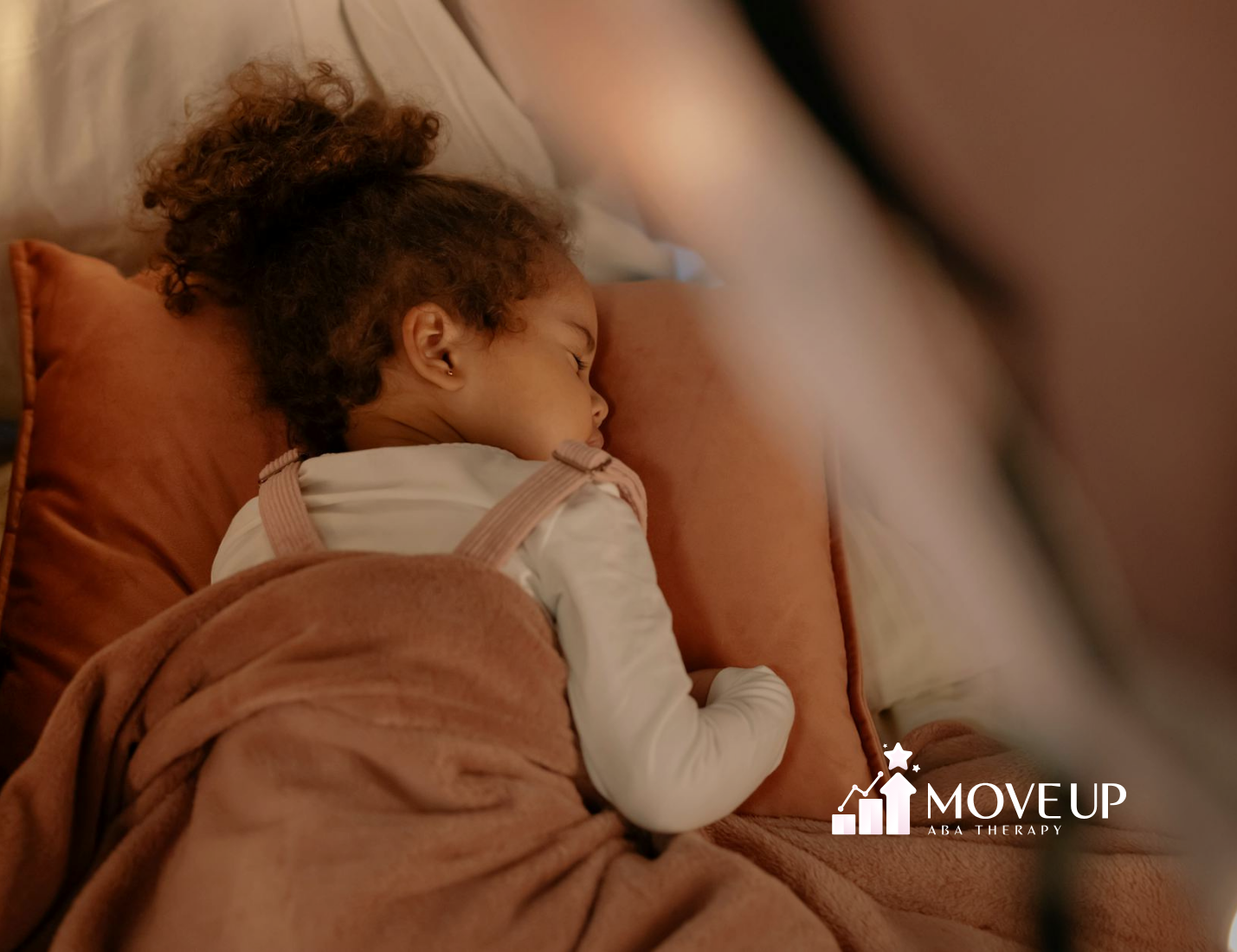As a parent of a child with autism spectrum disorder (ASD), you’re on a journey filled with both challenges and incredible moments of joy. One approach that’s been a game-changer for many families is behavioral therapy for autism. Think of it as a toolbox filled with strategies to help your little one navigate the world more easily. Let’s explore how various behavioral therapies can help your child learn new skills, improve communication, and turn everyday challenges into opportunities for growth.
Understanding Autism Spectrum Disorder and Behavioral Therapy
Before we dive into therapy options, let’s chat about autism spectrum disorders or ASD. ASD is like a colorful rainbow of experiences – each child with autism has their unique blend of strengths and challenges. That’s why it’s called a “spectrum.”
Behavioral therapy is like teaching your child a new language – the language of desired behavior. It’s all about reinforcing those heartwarming moments when your child does something wonderful and finding creative ways to reduce behaviors that might be causing stress for everyone involved.
Success Stories
“Move Up ABA has been a lifeline for our family. Before starting therapy, our son struggled with daily routines and communication. Now, he’s more independent and even initiated a conversation with a classmate for the first time! The progress we’ve seen in just six months is truly remarkable.”
- Emily R., Silver Spring, Accountant
“As a single dad, I was overwhelmed trying to manage my child’s behavior. The Move Up ABA team not only provided amazing support for my little girl but also taught me practical strategies to use at home. Their in-home sessions fit perfectly with our busy schedule. I’m so grateful for their patience and expertise.”
- Michael T., Rockville, Middle School Teacher
“We were hesitant about starting ABA therapy, but Move Up ABA’s approach put us at ease from day one. Our twins have made incredible strides in their social skills and self-regulation. The therapists are like extended family now, and we couldn’t be happier with our decision to work with them.”
- Aisha and James L., Simpson, Police Officers
The Magic of Early Intervention
Imagine planting a seed – the earlier you start nurturing it, the stronger it grows. That’s the idea behind early intervention. The sooner we start therapy, the more impact it can have on your child’s blossoming development. But remember, it’s never too late to begin this journey since ABA therapy has a wide age range!
Types of Behavioral Therapies for Autism
Let’s explore some of the most effective behavioral therapies that can make a big difference in your child’s life:
Applied Behavior Analysis (ABA): The Superhero of Autism Therapies
Applied Behavioral Analysis or ABA is like the Superman of behavioral therapies for autism. It’s been around the block a few times and has some impressive results to show for it. However, it’s important to note that ABA can be time-intensive and sometimes feels repetitive. This might be challenging for some children and families especially those who are in the autism spectrum.
Key principles of ABA therapy:
Positive reinforcement: Think of it as a “catch them being good” approach. Did your child use their words to ask for a snack instead of pointing? Time for a celebration!
Structured learning: This approach is like a GPS for your child’s development, guiding them towards success.
Data-driven: ABA therapists collect data to track progress and adjust strategies as needed.
Discrete Trial Training (DTT): Breaking Down Big Goals into Tiny Victories

DTT is like building a skill ladder, one rung at a time. Each small step is taught and practiced until it’s mastered.
For instance, teaching a child to brush their teeth might start with just holding the toothbrush, then putting it in their mouth, then moving it around, and so on.
While effective, DTT can sometimes feel artificial or disconnected from real-life situations, and some children might find the repetitive nature of the training tedious.
Pivotal Response Training (PRT): Motivation is the Key
PRT is like finding your child’s ‘on’ switch. It focuses on key areas of development, like motivation and communication skills.
Imagine your child loves cars – we might use toy cars to teach colors, counting, or even taking turns.
Suddenly, learning becomes as fun as playtime! The challenge with PRT can be identifying the right motivators for each child, as interests can change quickly, and what works one day might not work the next.
Cognitive Behavior Therapy (CBT): Rewriting the Mental Script
For older kids or those with milder symptoms, CBT is like being the director of your own mental movie.
It helps rewrite negative thought patterns into more positive ones. For example, turning “I can’t do this” into “This is tricky, but I can give it a try!”
CBT requires a certain level of language and introspection skills, which can be challenging for some children with autism. Adaptations might be necessary to make it accessible for your child.
Early Intensive Behavioral Intervention (EIBI)
EIBI is like a personalized boot camp for very young children with ASD. It’s intense, but it can lead to big improvements.
Think of it as giving your child a strong foundation to build on as they grow. The intensity of EIBI (often 20-40 hours per week) can be demanding for both the child and the family, potentially causing stress and burnout if not managed carefully.
Enhancing Communication Skills: Helping Your Child Find Their Voice
Many children with autism find communication tricky. It’s like they have beautiful thoughts trapped inside, and we need to find the right key to unlock them.
Speech Therapy: Building the Bridge of Language
Speech therapists are like language architects, building bridges between your child’s world and ours. They might work on:
Articulation: Pronouncing sounds and words clearly
Pragmatics: Understanding the unwritten rules of conversation
Augmentative and Alternative Communication (AAC): Using tools like picture boards or speech-generating devices
Picture Exchange Communication System (PECS): A Visual Voice
For our friends who are more visual learners or non-verbal, PECS is like giving them a visual voice. Imagine your child being able to show you a picture of a glass when they’re thirsty – it’s a communication breakthrough!
Improving Social Skills: Helping Your Child Navigate the Social World
Social interaction can be like a complicated dance for children with autism. Behavioral therapies can help them learn the steps.
Social Skills Groups: Learning with Peers
Think of social skills groups as a rehearsal space for real-life interactions. Kids can practice things like taking turns, reading facial expressions, or maintaining conversations in a safe, supportive environment.
Play Therapy: Serious Learning Disguised as Fun
Play therapy sneaks learning into playtime. It’s like hiding veggies in a delicious smoothie – your child is having so much fun, they don’t realize they’re developing crucial skills!
Occupational Therapy: Mastering the Art of Everyday Living
Occupational therapists are like life coaches for kids. They help with all sorts of daily skills that most of us take for granted.
Fine and Gross Motor Skills: From Buttons to Bicycles

OT can help your child master everything from buttoning their shirt (fine motor) to riding a bike or kneading dough (gross motor). It’s all about making everyday tasks easier and more achievable.
Sensory Integration Therapy: Making Sense of the Senses
Many kids with autism experience the world in vivid sensory detail. Sensory integration therapy helps them manage overwhelming sensory input. It’s like giving them a volume control for their senses.
Addressing Challenging Behaviors: Turning Struggles into Strengths
Behavioral management therapy can help transform challenging behaviors into opportunities for growth.
Understanding the Function of Behavior: Playing Detective
Before we can address a behavior, we need to understand it. Is your child having a meltdown in the grocery store because of the bright lights, the crowd, or because they want a cookie? Understanding the ‘why’ helps us find the right solution.
Teaching Alternative Behaviors: Finding a Better Way
Once we know why a behavior is happening, we can teach a better way to handle the situation. Instead of a meltdown, we might teach your child to use a special signal when they’re feeling overwhelmed and need a break.
The Power of Positive Reinforcement: Catching Them Being Good
Positive reinforcement is the secret sauce of behavioral autism therapies.
It’s all about making good behaviors more appealing than challenging ones. Every child is different – one might be motivated by stickers, another by extra playtime. Finding what makes your child’s face light up is key to effective reinforcement.
Integrating Therapy into Everyday Life: Making Every Moment Count
For the best results, we want to sprinkle a little therapy magic into all areas of your child’s life. You’re the expert on your child, and therapists are the experts on therapy. Together, you’re an unbeatable team! Learn how to bring therapy techniques into your daily routines.
The Role of Family in Autism Behavioral Therapy: You’re the Real MVPs
Family involvement is the secret ingredient in the recipe for therapy success. Remember to support siblings and maintain family balance – it’s important to make sure everyone in the family feels supported and included.
Core Concepts: Building Blocks for Your Child’s Progress
As we wrap up our journey through the world of behavioral therapy for autism, let’s highlight some key points to remember:
Every child is unique: Just like fingerprints, no two children with autism are exactly alike. The therapy that works wonders for one child might need tweaking for another. It’s all about finding the right fit for your little one.
Early intervention is powerful: The earlier you start, the more impact therapy can have. But remember, it’s never too late to begin this journey.
ABA is a cornerstone: Applied Behavior Analysis has a strong track record, but it’s not the only player in the game. From cognitive behavior therapy to sensory integration, there’s a whole toolkit of approaches to explore.

Communication is key: Whether through speech, pictures, or alternative methods, helping your child express themselves is a game-changer.
Social skills can be learned: With the right support, your child can navigate the social world more comfortably.
Daily living skills matter: Occupational therapy can help turn everyday challenges into opportunities for independence.
Positive reinforcement works wonders: Catching your child being good and celebrating small wins can lead to big changes.
Family involvement is crucial: You’re the expert on your child, and your involvement can supercharge their progress.
Keep these points in mind as you navigate your journey with behavioral therapy. They’ll serve as your compass, helping you make informed decisions and celebrate the progress along the way.
Wrapping Up: Your Journey with Behavioral Therapy for Autism
Parenting a child with autism is a journey filled with challenges, yes, but also incredible moments of joy, breakthrough, and connection.
As you move forward with behavioral therapy, remember that progress isn’t always a straight line. There will be ups and downs, twists and turns, but every step forward, no matter how small, is a victory worth celebrating.
Your child has unlimited potential, and behavioral therapy is one of the keys to unlocking it. With patience, love, and the right support, you’ll be amazed at what your child can achieve.
At Move Up ABA, we’re here to support you and your child every step of the way. Whether you’re just starting this journey or looking to enhance your current approach, we’re here to help. Together, we can help your child reach their full potential and write their own success story.
Ready to take the first step? Reach out to us at Move Up ABA today, and let’s start this beautiful journey together. Your child’s brightest future is waiting!
400 E Pratt St, Floor 8 Baltimore , Maryland 21202, United States
Questions?
Email Us: intake@moveupaba.com
Call Us: (410) 469-1090






